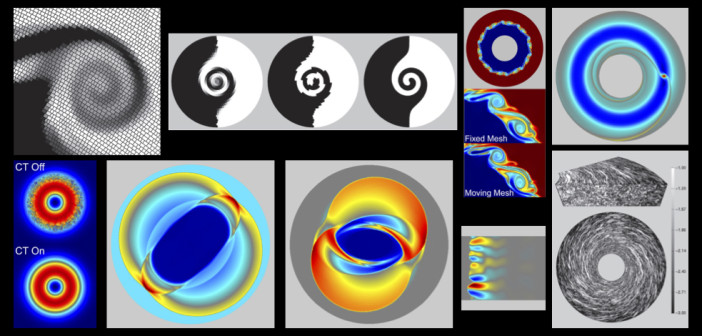Creating the codes that are used to numerically model astrophysical systems takes a lot of work — and a lot of testing! A new, publicly available moving-mesh magnetohydrodynamics (MHD) code, DISCO, is designed to model 2D and 3D orbital fluid motion, such as that of astrophysical disks. In a recent article, DISCO creator Paul Duffell (University of California, Berkeley) presents the code and the outcomes from a series of standard tests of DISCO’s stability, accuracy, and scalability.
From left to right and top to bottom, the test outputs shown above are: a cylindrical Kelvin-Helmholtz flow (showing off DISCO’s numerical grid in 2D), a passive scalar in a smooth vortex (can DISCO maintain contact discontinuities?), a global look at the cylindrical Kelvin-Helmholtz flow, a Jupiter-mass planet opening a gap in a viscous disk, an MHD flywheel (a test of DISCO’s stability), an MHD explosion revealing shock structures, an MHD rotor (a more challenging version of the explosion), a Flock 3D MRI test (can DISCO study linear growth of the magnetorotational instability in disks?), and a nonlinear 3D MRI test.
Check out the gif below for a closer look at each of these images, or follow the link to the original article to see even more!
Citation
Paul C. Duffell 2016 ApJS 226 2. doi:10.3847/0067-0049/226/1/2

